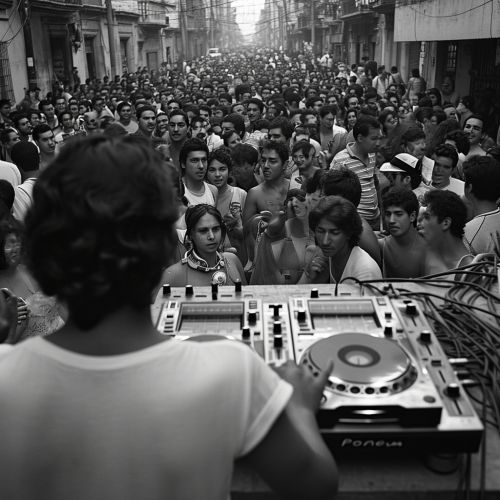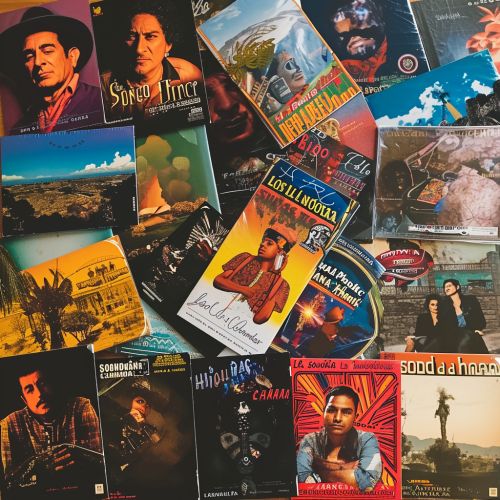Cumbia Sonidera
Origins and History
Cumbia Sonidera is a regional variant of the broader genre of Cumbia music, which originated in Colombia. The term "Sonidera" refers to the "sonido" or sound systems used by DJs in Mexico City during the 1960s and 1970s. These DJs would play a mix of tropical music, including Cumbia, and would often modify the songs by adding in their own sound effects and vocal commentary, a style that became known as Cumbia Sonidera.


The genre was further popularized by artists such as Rigo Tovar and his group Costa Azul, who incorporated elements of rock and roll and other popular music styles into their Cumbia sound. This fusion of styles helped to broaden the appeal of Cumbia Sonidera and led to its spread throughout Mexico and into the United States.
Musical Characteristics
Cumbia Sonidera is characterized by a syncopated rhythm, with the emphasis on the off-beat. This rhythm is typically created using a combination of percussion instruments, including drums, congas, and cowbells, as well as electronic beats in more modern interpretations.
The melody in Cumbia Sonidera is often carried by a combination of instruments, including accordions, brass instruments, and keyboards. The use of the accordion in particular is a distinctive feature of the genre, reflecting its roots in the folk music of Colombia.
In addition to the instrumental elements, Cumbia Sonidera often features vocals, which can range from melodic singing to spoken word or rap-style delivery. The lyrics often tell stories or convey messages about love, social issues, or everyday life experiences.


Cultural Impact and Influence
Cumbia Sonidera has had a significant cultural impact, particularly in Mexico and among Mexican communities in the United States. The genre has been embraced as a symbol of cultural identity and has played a key role in community celebrations and social events.
The popularity of Cumbia Sonidera has also led to its influence on other music genres. Elements of Cumbia Sonidera can be heard in various forms of Latin pop and dance music, and the genre has been sampled by artists in the hip hop and electronic music scenes.
Despite its popularity, Cumbia Sonidera has also faced criticism and controversy. Some purists argue that the genre is a commercialized and diluted form of traditional Cumbia, while others have raised concerns about the portrayal of women and social issues in some Cumbia Sonidera lyrics.
Notable Artists and Recordings
There are many artists who have made significant contributions to the development and popularity of Cumbia Sonidera. Some of the most notable include Rigo Tovar and his group Costa Azul, Los Angeles Azules, and Sonido La Changa.
In addition to these artists, there are many recordings that have become classics of the genre. These include "La Cumbia del Mole" by Lila Downs, "El Sonidito" by Hechizeros Band, and "Cumbia Sobre el Rio" by Celso Piña.


